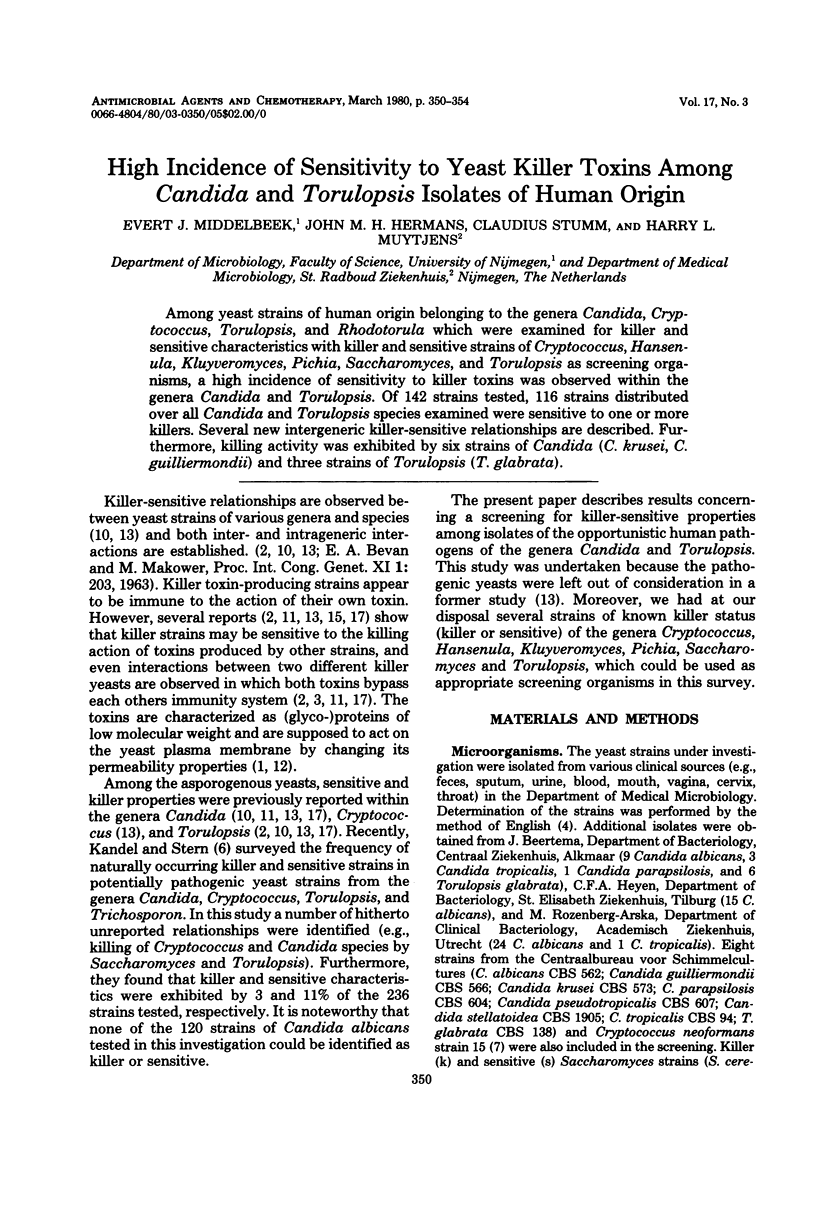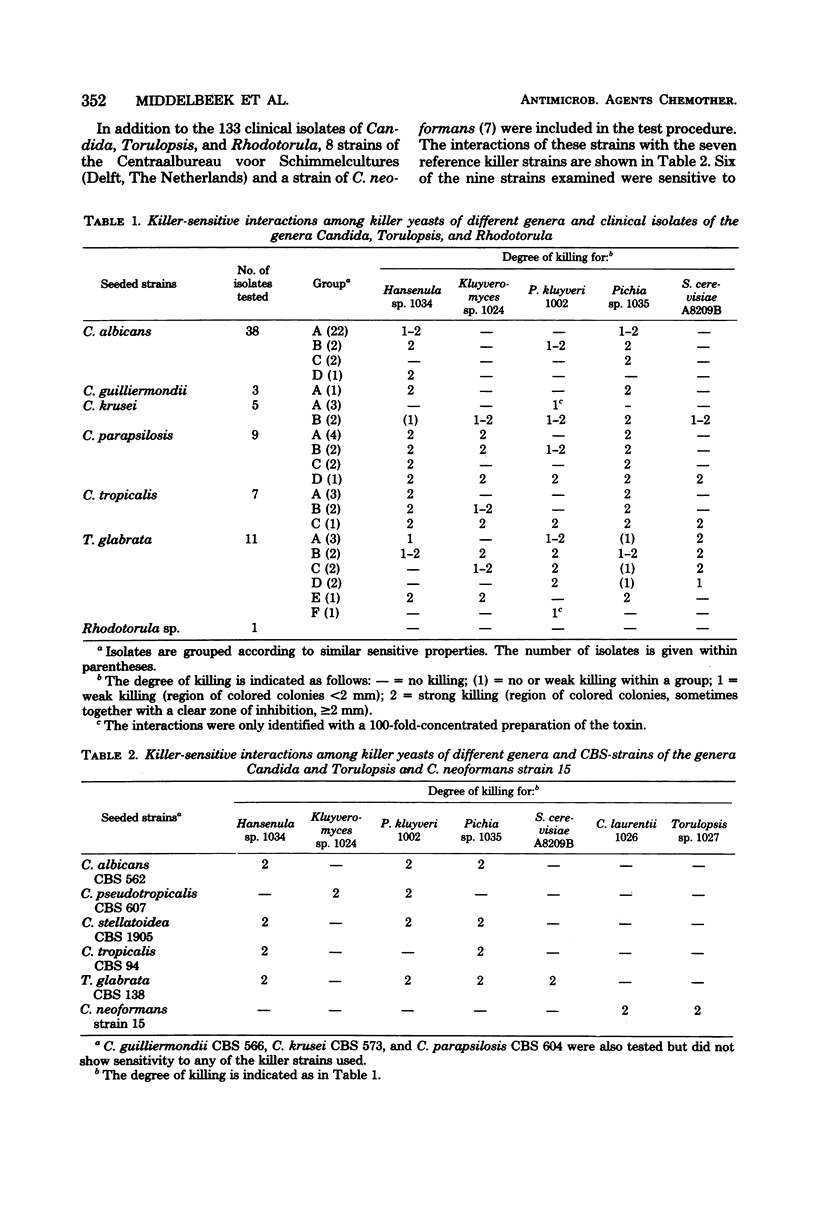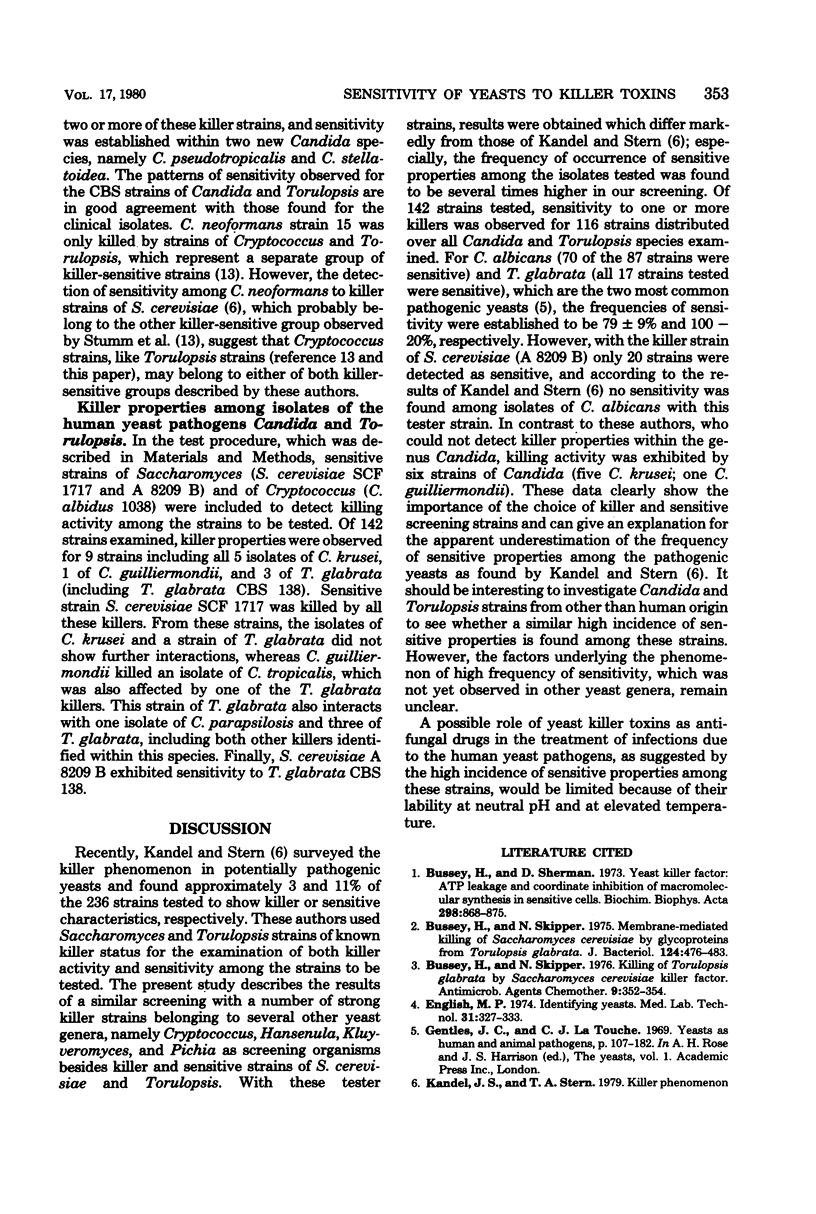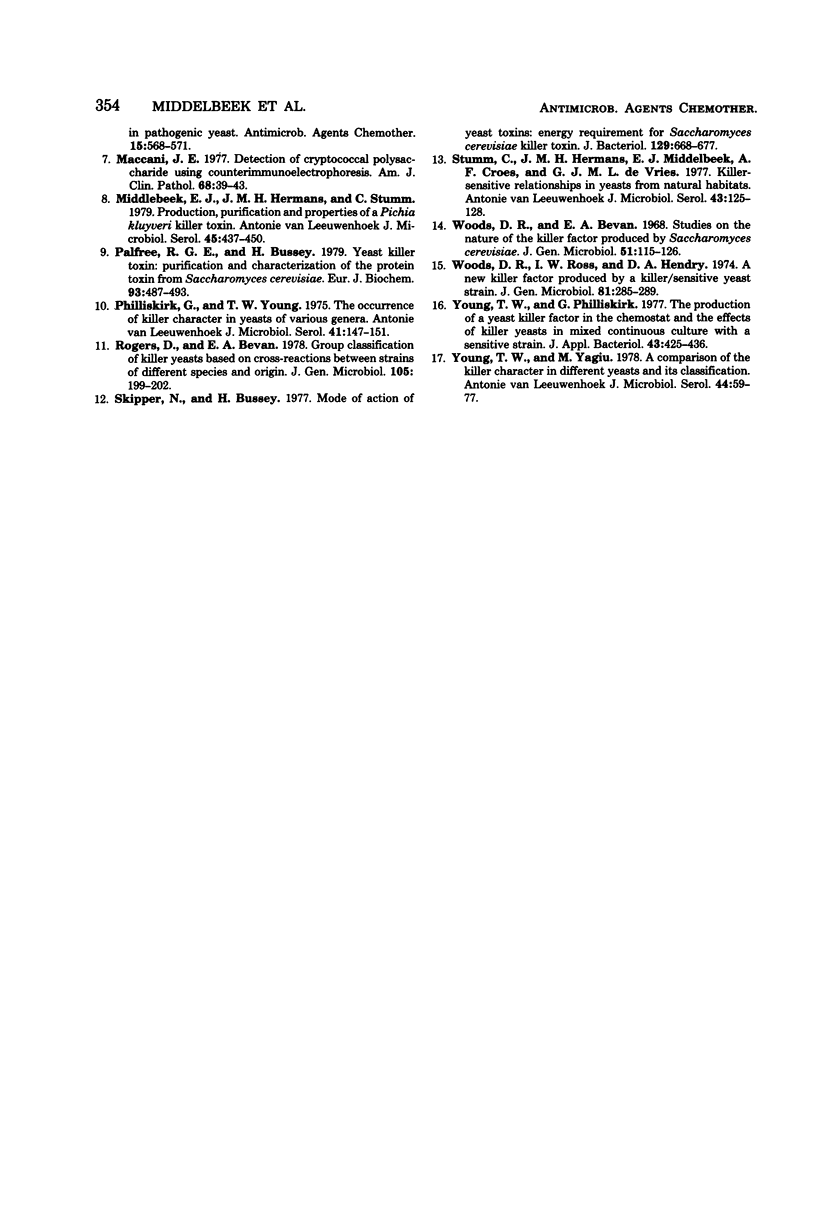Abstract
Among yeast strains of human origin belonging to the genera Candida, Cryptococcus, Torulopsis, and Rhodotorula which were examined for killer and sensitive characteristics with killer and sensitive strains of Cryptococcus, Hansenula, Kluyveromyces, Pichia, Saccharomyces, and Torulopsis as screening organisms, a high incidence of sensitivity to killer toxins was observed within the genera Candida and Torulopsis. Of 142 strains tested, 116 strains distributed over all Candida and Torulopsis species examined were sensitive to one or more killers. Several new intergeneric killer-sensitive relationships are described. Furthermore, killing activity was exhibited by six strains of Candida (C. krusei, C. guilliermondii) and three strains of Torulopsis (T. glabrata).
Full text
PDF




Selected References
These references are in PubMed. This may not be the complete list of references from this article.
- Bussey H., Sherman D. Yeast killer factor: ATP leakage and coordinate inhibition of macromolecular synthesis in sensitive cells. Biochim Biophys Acta. 1973 Apr 16;298(4):868–875. doi: 10.1016/0005-2736(73)90391-x. [DOI] [PubMed] [Google Scholar]
- Bussey H., Skipper N. Killing of Torulopsis glabrata by Saccharomyces cerevisiae killer factor. Antimicrob Agents Chemother. 1976 Feb;9(2):352–354. doi: 10.1128/aac.9.2.352. [DOI] [PMC free article] [PubMed] [Google Scholar]
- Bussey H., Skipper N. Membrane-mediated killing of Saccharomyces cerevisiae by glycoproteins from Torulopsis glabrata. J Bacteriol. 1975 Oct;124(1):476–483. doi: 10.1128/jb.124.1.476-483.1975. [DOI] [PMC free article] [PubMed] [Google Scholar]
- English M. P. Identifying yeasts. Med Lab Technol. 1974 Oct;31(4):327–333. [PubMed] [Google Scholar]
- Kandel J. S., Stern T. A. Killer phenomenon in pathogenic yeast. Antimicrob Agents Chemother. 1979 Apr;15(4):568–571. doi: 10.1128/aac.15.4.568. [DOI] [PMC free article] [PubMed] [Google Scholar]
- Maccani J. E. Detection of cryptococcal polysaccharide using counterimmunoelectrophoresis. Am J Clin Pathol. 1977 Jul;68(1):39–44. doi: 10.1093/ajcp/68.1.39. [DOI] [PubMed] [Google Scholar]
- Middelbeek E. J., Hermans J. M., Stumm C. Production, purification and properties of a Pichia kluyveri killer toxin. Antonie Van Leeuwenhoek. 1979;45(3):437–450. doi: 10.1007/BF00443282. [DOI] [PubMed] [Google Scholar]
- Palfree R. G., Bussey H. Yeast killer toxin: purification and characterisation of the protein toxin from Saccharomyces cerevisiae. Eur J Biochem. 1979 Feb 1;93(3):487–493. doi: 10.1111/j.1432-1033.1979.tb12847.x. [DOI] [PubMed] [Google Scholar]
- Philliskirk G., Young T. W. The occurrence of killer character in yeasts of various genera. Antonie Van Leeuwenhoek. 1975;41(2):147–151. doi: 10.1007/BF02565046. [DOI] [PubMed] [Google Scholar]
- Skipper N., Bussey H. Mode of action of yeast toxins: energy requirement for Saccharomyces cerevisiae killer toxin. J Bacteriol. 1977 Feb;129(2):668–677. doi: 10.1128/jb.129.2.668-677.1977. [DOI] [PMC free article] [PubMed] [Google Scholar]
- Stumm C., Hermans J. M., Middelbeek E. J., Croes A. F., de Vries G. J. Killer-sensitive relationships in yeasts from natural habitats. Antonie Van Leeuwenhoek. 1977;43(2):125–128. doi: 10.1007/BF00395667. [DOI] [PubMed] [Google Scholar]
- Woods D. R., Bevan E. A. Studies on the nature of the killer factor produced by Saccharomyces cerevisiae. J Gen Microbiol. 1968 Apr;51(1):115–126. doi: 10.1099/00221287-51-1-115. [DOI] [PubMed] [Google Scholar]
- Woods D. R., Ross I. W., Hendry D. A. A new killer factor produced by a killer-sensitive yeast strain. J Gen Microbiol. 1974 Apr;81(2):285–289. doi: 10.1099/00221287-81-2-285. [DOI] [PubMed] [Google Scholar]
- Young T. W., Philliskirk G. Production of a yeast killer factor in the chemostat and the effects of killer yeasts in mixed continuous culture with a sensitive strain. J Appl Bacteriol. 1977 Dec;43(3):425–436. doi: 10.1111/j.1365-2672.1977.tb00769.x. [DOI] [PubMed] [Google Scholar]
- Young T. W., Yagiu M. A comparison of the killer character in different yeasts and its classification. Antonie Van Leeuwenhoek. 1978;44(1):59–77. doi: 10.1007/BF00400077. [DOI] [PubMed] [Google Scholar]


